Introduction:
As a Geo-structural Engineer deeply involved in the field of tunnel construction and soil mechanics, my recent webinar focused on an area of growing importance: the behavior of NATM (New Austrian Tunneling Method) tunnels in the porous clays of São Paulo. The rapid urbanization globally necessitates the expansion of underground spaces, and São Paulo's unique geotechnical conditions offer a rich study ground. This article, an extension of my webinar, aims to share key insights and research findings with engineering professionals worldwide on this global engineer knowledge-sharing platform.
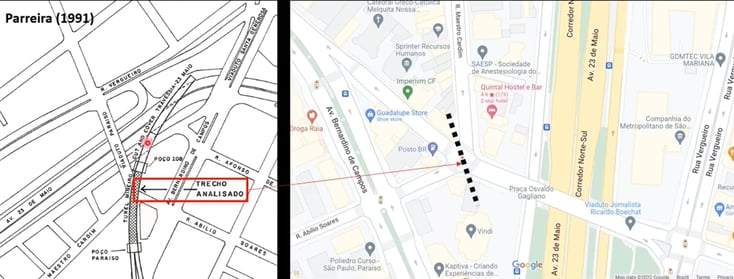 Figure 1 - The Paraíso Tunnel of the São Paulo Metro, a focus of our study.
Figure 1 - The Paraíso Tunnel of the São Paulo Metro, a focus of our study.Motivation Behind the Study
Urban development trends and the dire need for underground infrastructure in densely populated areas drive this research. In tropical regions like São Paulo, encountering mature residual soils with high porosity is common. These soils behave differently from traditional sandy and clayey soils, posing unique challenges in tunnel construction.
The Paraíso Tunnel Case Study
At the heart of our research lies the Paraíso tunnel of the São Paulo metro. This 100-meter-long tunnel, with a cross-sectional area of 82 square meters, is a prime example of the challenges and intricacies involved in urban tunneling. The construction sequence, involving partial excavation and the complex interplay of geological layers, highlights the need for a nuanced approach to tunnel design and execution.
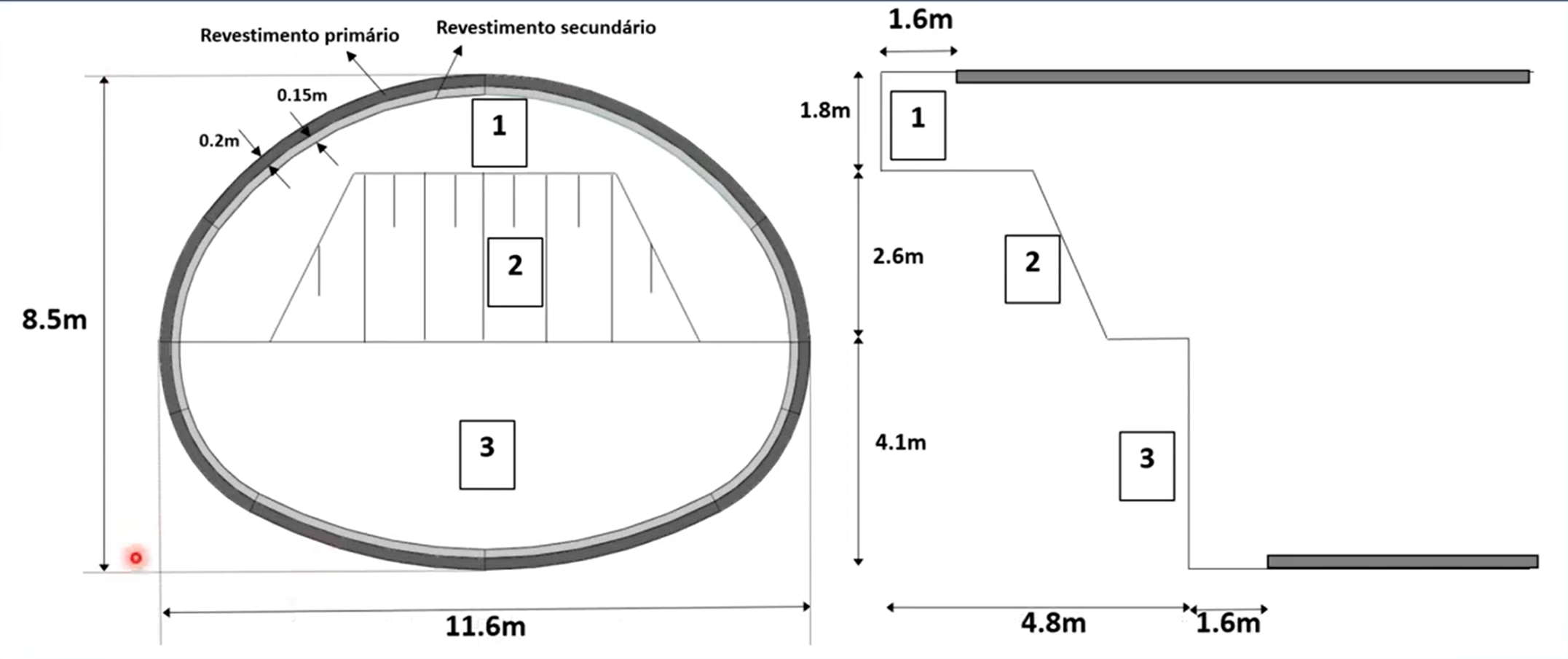
Advanced Constitutive Modeling
To capture the true behavior of the tunnel during excavation, we used advanced constitutive modeling calibrated with triaxial tests. This approach considers the unique properties of São Paulo's porous clays. We utilized MIDAS GTS NX software for a three-dimensional model, ensuring a more accurate and realistic representation of the tunnel's behavior under various loading conditions.
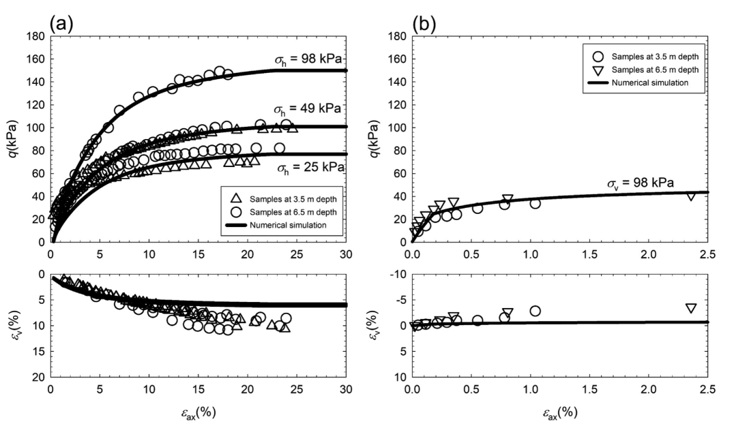 Fig. 4. Experimental data and numerical simulation of the triaxial tests. (a) Triaxial compression loading under 25, 49 and 98 kPa confinement stresses, and (b) triaxial compression unloading for 98 kPa vertical stress. rh is the horizontal stress, rv is the vertical stress, ev is the volumetric strain, and eax is the axial strain
Fig. 4. Experimental data and numerical simulation of the triaxial tests. (a) Triaxial compression loading under 25, 49 and 98 kPa confinement stresses, and (b) triaxial compression unloading for 98 kPa vertical stress. rh is the horizontal stress, rv is the vertical stress, ev is the volumetric strain, and eax is the axial strain
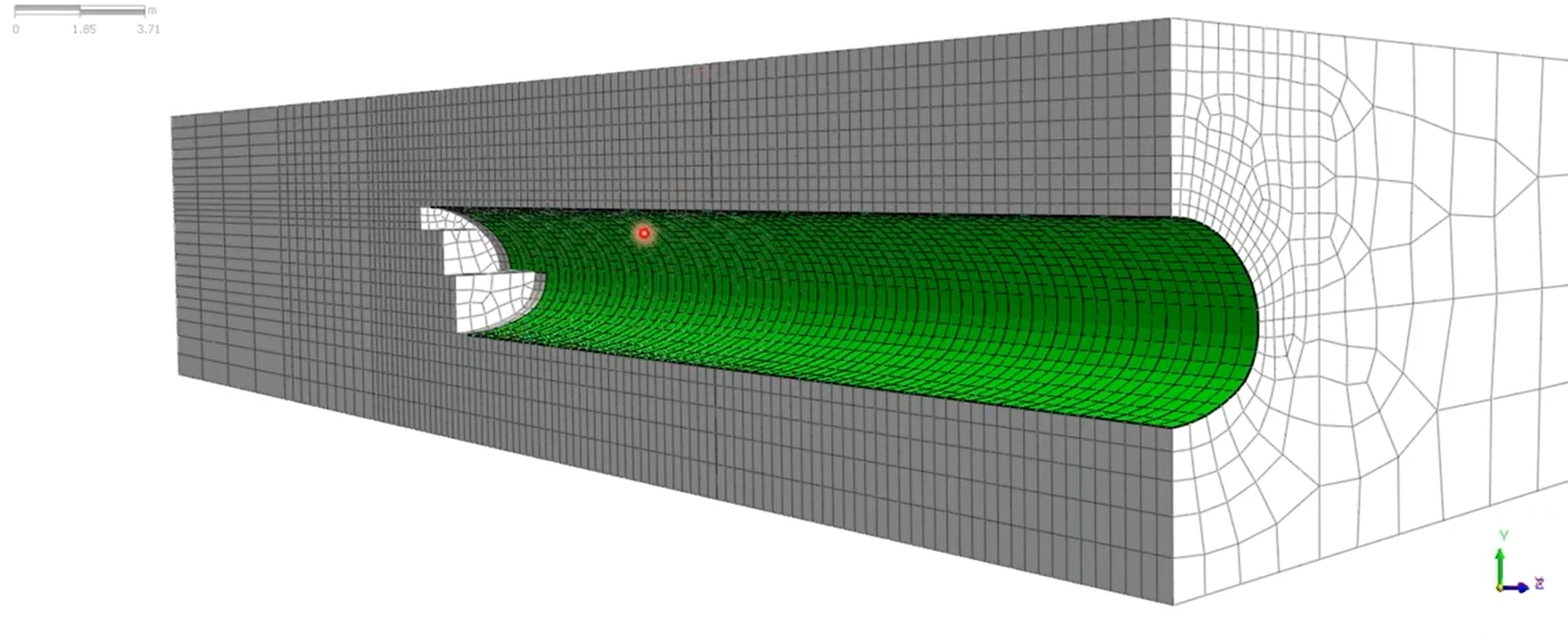 Three-dimensional model of the Paraíso Tunnel for accurate representation
Three-dimensional model of the Paraíso Tunnel for accurate representation
Impact of Construction Sequence
Our study underlines the importance of considering the entire construction sequence in tunnel design. For the Paraíso tunnel, we observed that the primary lining's timing and method of application significantly impacted the tunnel's stability and the surrounding soil's deformation.
Calibration and Validation with Instrumentation Data
We calibrated our model using detailed instrumentation data collected from the tunnel site. This data included measurements of surface settlements, horizontal displacements, and convergence in the tunnel lining. Through this calibration, we were able to validate our model's accuracy in representing the real-world behavior of the tunnel.
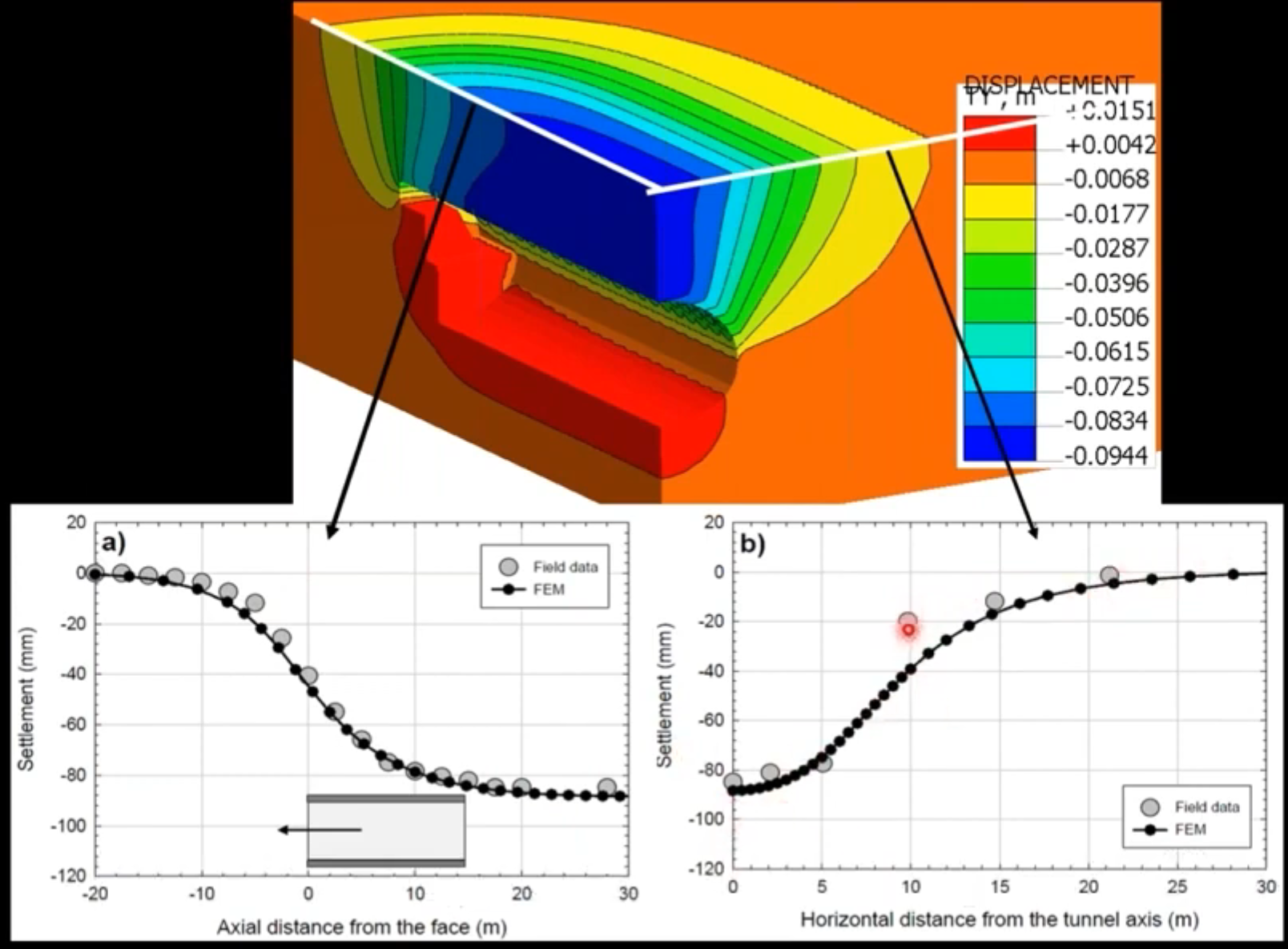
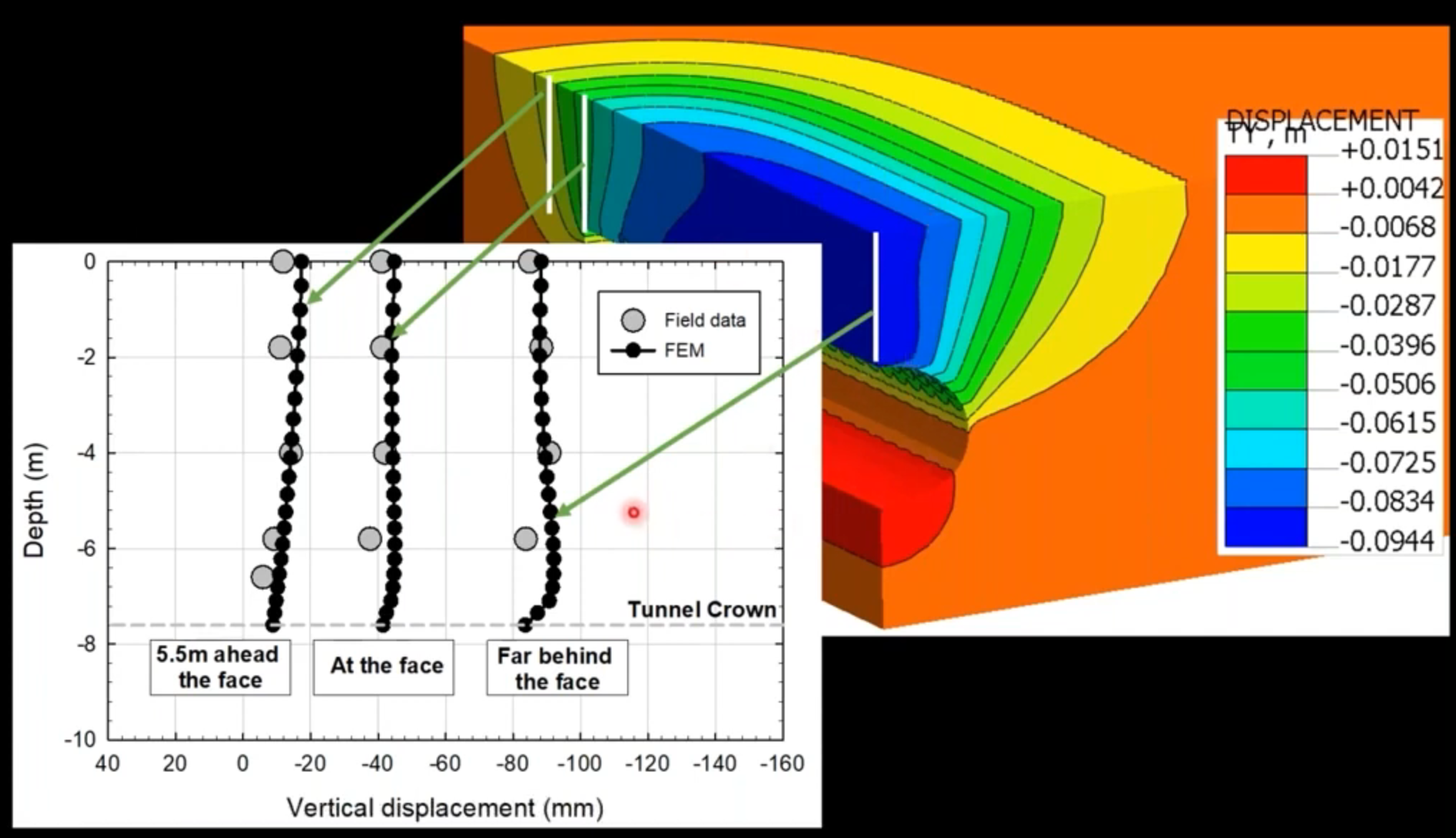
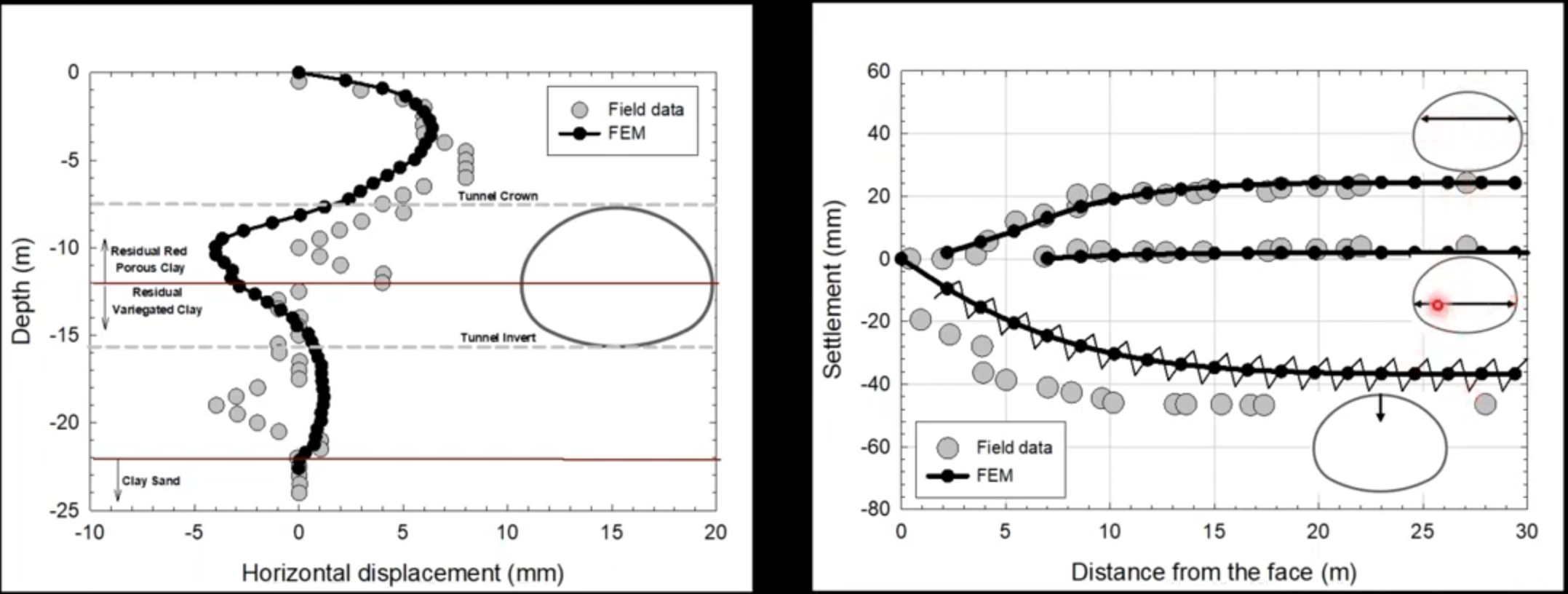 Comparison of model results with instrumentation data for validation
Comparison of model results with instrumentation data for validation
Investigating Design Parameters
Our research further delved into the influence of design parameters such as the lining's stiffness and the excavation's partialization. We found that these factors play a crucial role in controlling deformations and ensuring the tunnel's structural integrity.
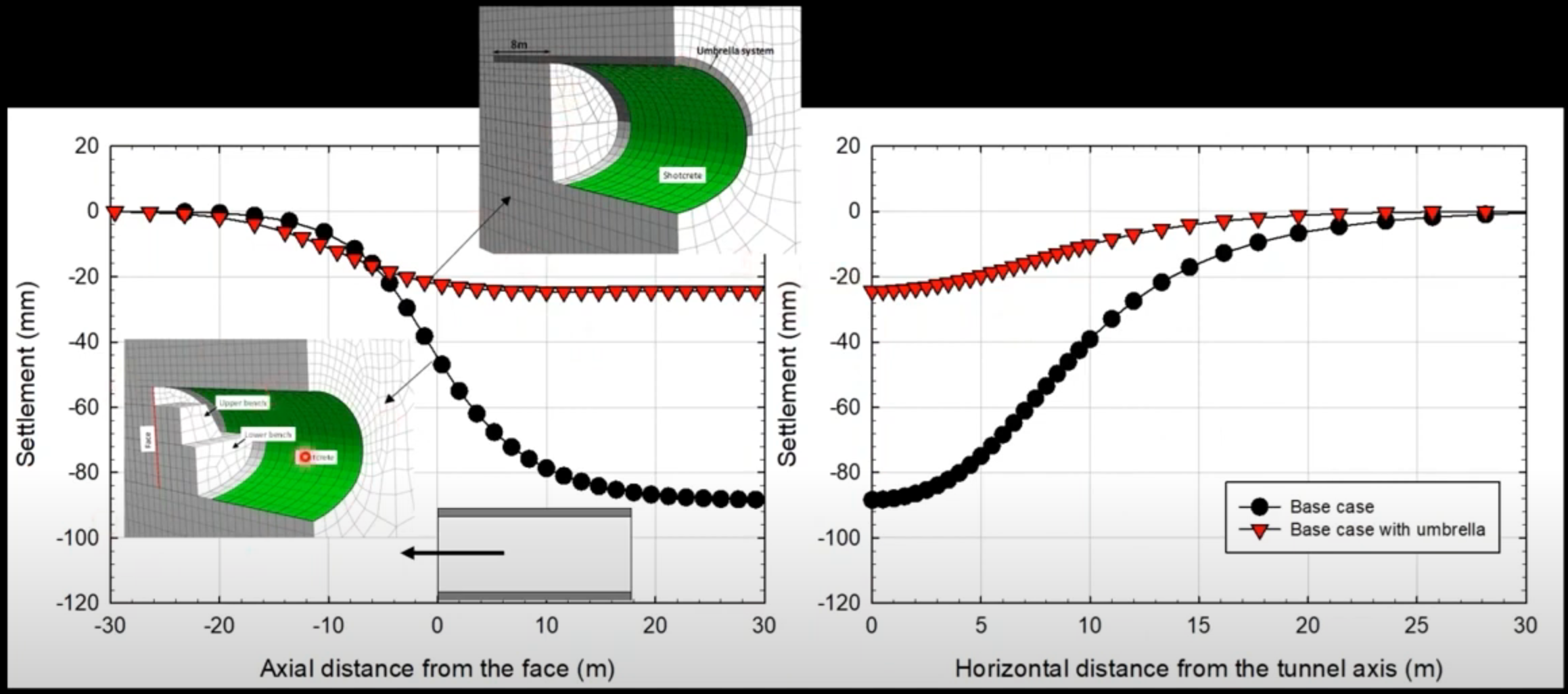
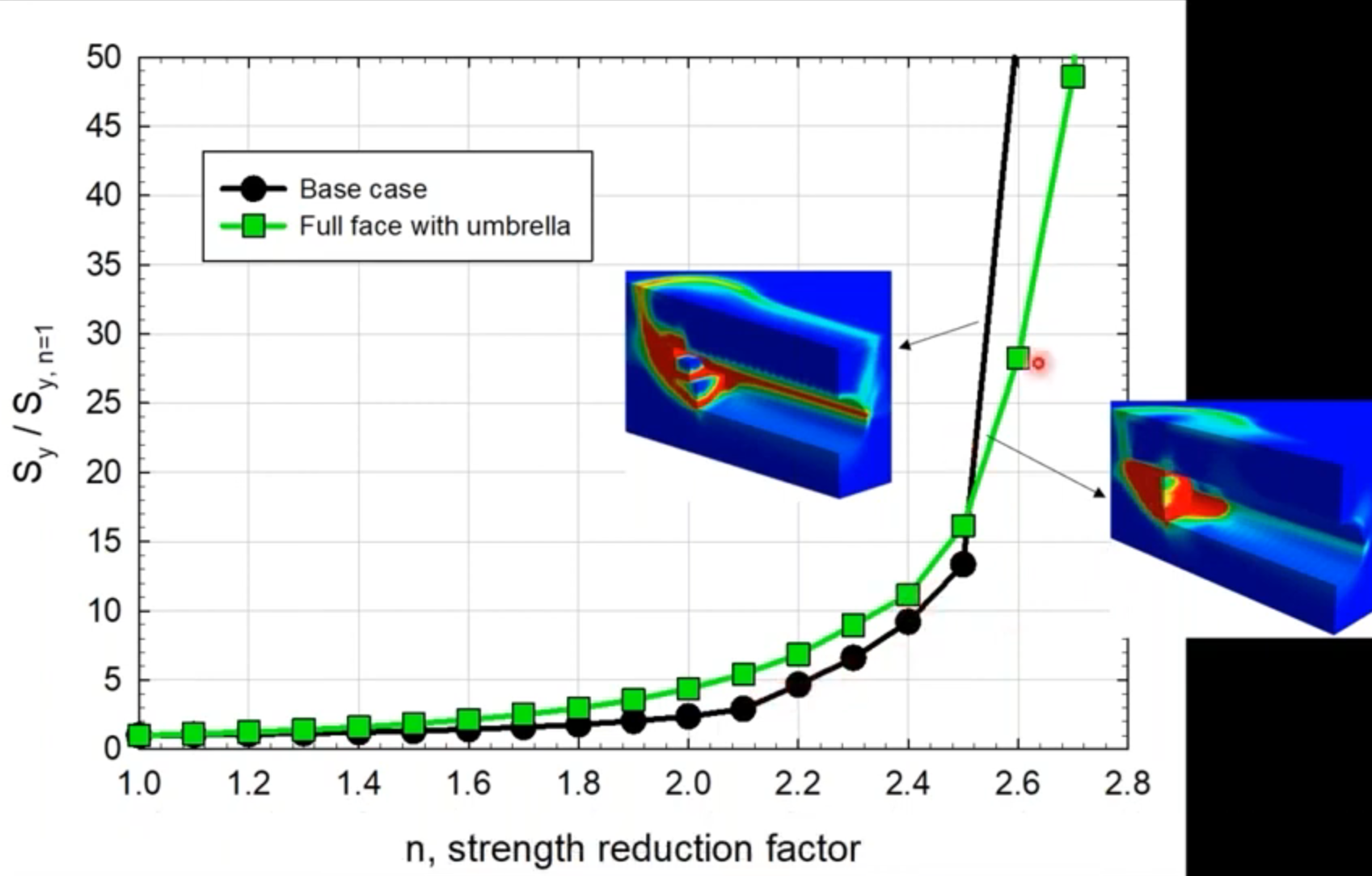
The Role of Advanced Soil Modeling
One of the pivotal aspects of our study was the use of advanced soil modeling techniques. By accurately modeling the porous clays, we could better predict and manage the potential impacts of tunneling on the surrounding urban environment.
Conclusion
The construction of NATM tunnels in complex geological conditions like São Paulo's porous clays demands a nuanced and sophisticated approach. Our research, based on the Paraíso tunnel, provides valuable insights into the critical role of constitutive modeling, the importance of construction sequencing, and the impact of various design parameters on tunnel stability and soil deformations.
As urbanization continues to drive the need for underground space, sharing this knowledge becomes essential for the global engineering community. It's through such collaborative platforms that we can advance our understanding and continue to innovate in the field of geotechnical engineering, ensuring the safe and efficient development of our urban underground spaces.
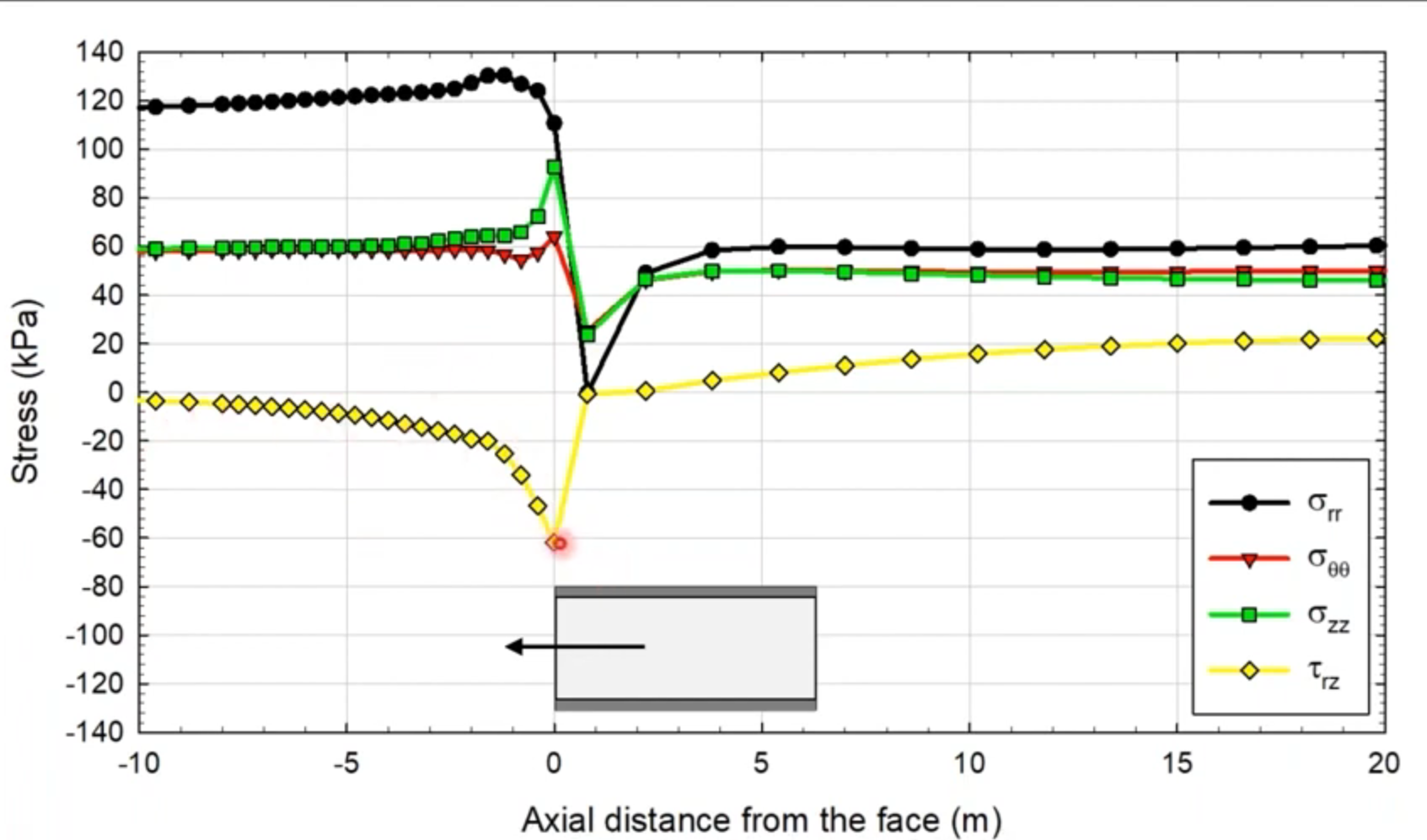
If you're eager to explore the intricacies of tunnel construction in São Paulo's porous clays in greater detail, we invite you to watch the complete webinar by following [this link]
References
Vitali, O. P. M.; Celestino T. B.; Bobet, A. (2022) Construction strategies for a NATM tunnel in Sao Paulo, Brazil, in residual soil. Underground Space. 7(1): 1-18. Available at: https://doi.org/10.1016/j.undsp.2021.04.002.
#NATM Tunnels
#Porous Clays
#Advanced Soil Modeling

Dr. Osvaldo Vitali, an esteemed Assistant Professor in the Department of Civil and Environmental Engineering at the University of Hawaii at Manoa, brings a wealth of knowledge and experience in geotechnical and structural design. Holding a Ph.D. from the Lyles School of Civil Engineering at Purdue University, he has an impressive publication record with over 30 articles in his field. Dr. Vitali's expertise is particularly notable in the areas of tunneling, underground structures, and the complex interactions of geotechnical structures in urban settings, alongside a keen interest in applying geomechanics to renewable energy projects.
※ Click on the keywords below 'Topics' to view related content.


![Design and Practical Examples of Baseplates and Anchor Rods [sample download]](https://2495902.fs1.hubspotusercontent-na1.net/hubfs/2495902/%EC%8D%B8%EB%84%A4%EC%9D%BC22.png)
![Understanding Drafting Standards [ Drawing download ]](https://2495902.fs1.hubspotusercontent-na1.net/hubfs/2495902/%EC%8D%B8%EB%84%A4%EC%9D%BC24.png)
![Key Changes in ACI 318-19: A New Standard for Structural Design [ PDF download]](https://2495902.fs1.hubspotusercontent-na1.net/hubfs/2495902/%EC%8D%B8%EB%84%A4%EC%9D%BC21-1.png)
![Design and Practical Examples of Lug design(ASME BTH-1) [sample download]](https://2495902.fs1.hubspotusercontent-na1.net/hubfs/2495902/%EC%8D%B8%EB%84%A4%EC%9D%BC20-1.png)



